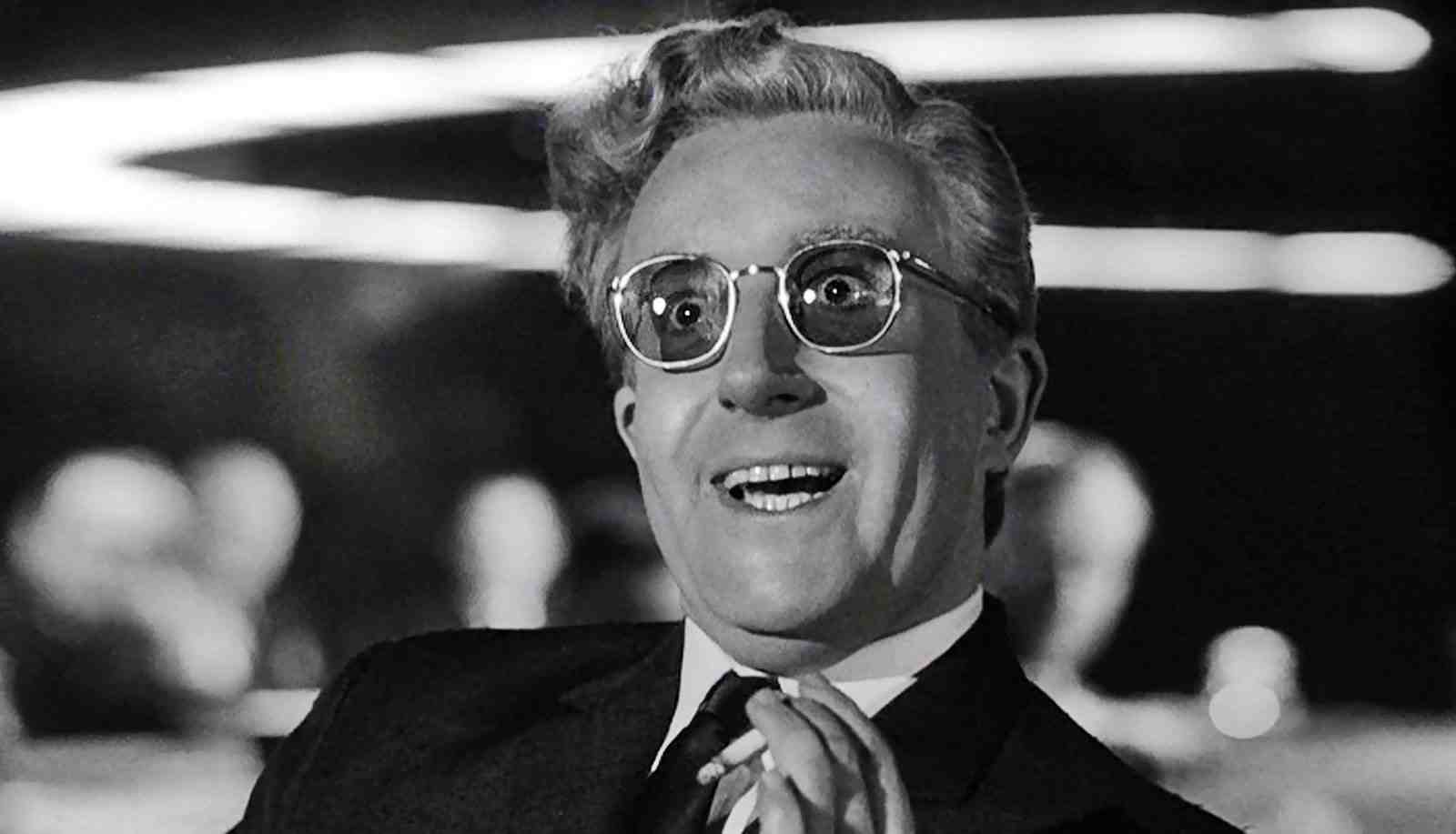
The period in world history known as The Cold War covers a wide swath of time, extending through five decades. The seemingly never ending stand off between the United States and the Soviet Union played itself out in a wide array of films that now shed light on a period falling further into the past.
During the 1950s Cold War anxieties were explored in Science Fiction movies as Susan Sontag explained in her critical “The Imagination of Disaster.” Such films allowed audiences to work out the psychological terrors of the age. Films like Earth vs. the Flying Saucers and War of the Worlds provided escape from banality, yet at the same time normalized the unthinkable.
By the early 1960s films like On The beach and Fail Safe dealt honestly with the prospect of nuclear war as a realistic outcome if the superpowers did not find a way to live in coexistence. These moralistic films were designed to terrify audiences with plausible scenarios.
As the Cold War tensions slightly eased (by no means vanished) as the 1960s rolled along, the espionage film skyrocketed to popularity with the introduction of the secret agent James Bond. Studios churned out countless imitations and parodies of the spy genre to allow escape from Vietnam and the other traumas of the decade.
Cultural shifts in the 1970s altered the dynamics of Cold War culture. With the Vietnam War winding down, Nixon opening relations with China and engaging in detente with the Soviet Union, the Cold War appeared passé. American movies turned inward into more existential issues. Cold War themed films in the 70s verged on camp and parody, examples being the forgotten Sutherland/Gould vehicle S*P*Y*S or the Bond films with Roger Moore.
As conservatism revived in the West with the election Margaret Thatcher and Ronald Reagan, both outspoken anti-communists who spoke of the Soviet Union as an ‘Evil Empire,” pop culture jumped right on the train. The Cold War film returned with a vengeance, everything from Rambo to GI Joe cartoons
Now that the Cold War’s receded into history, fewer films revisit the time period, but the era remains a presence in public memory, the popularity of the FX show The Americans being an example.
The following list is not intended to be definitive, just 25 worthwhile films for anyone who wants to learn more about the Cold War. Also, the majority of these films are from a Western perspective, thus calling for further lists with a more global outlook.
25. Confessions of a Dangerous Mind (George Clooney, 2002)
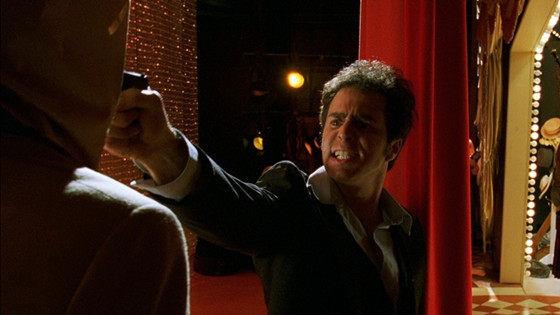
Chuck Barris, TV game show impresario during the 1960s and 1970s, claimed in his autobiography he once worked as a contract killer for the CIA. Charlie Kaufman’s idiosyncratic script drew upon multiple genre tropes to create a psychedelic style in a fresh look at cultural milieu of the Cold War.
Sam Rockwell plays Barris as a total oddball who broke into the TV industry and went on to create popular shows like The Dating Game and The Gong Show, programs criticized for reducing TV to the lowest common denominator. During his off time, Barris traveled overseas to assassinate enemies of America.
Clooney took a dark turn as Barris’s creepy case officer with secrets of his own. Drew Barrymore, Julia Robert, and Rutger Hauer are all superb in their supporting roles. Interviews with Dick Clark and those who knew Barris in the television business add to the surreal nature of the film.
Although Kaufman criticized Clooney’s handling of his script, which was originally much darker, the tension served the film well, a hybrid of a period peace and genre bending post-modernism.
24. Gorky Park (Michael Apted, 1983)
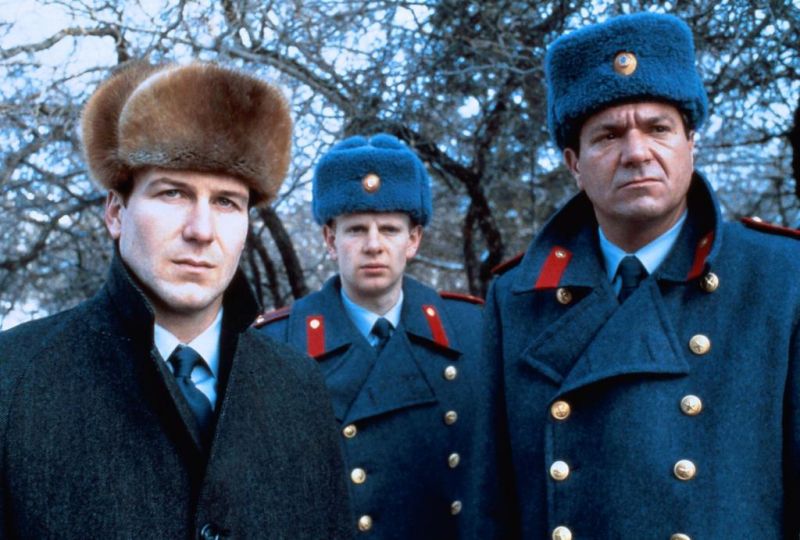
A rare Hollywood movie set in the Soviet Union (although it was filmed in Helsinki, Finland) with a Soviet protagonist and an American antagonist, Gorky Park plays like a C.S.I. episode with a Cold War backdrop.
William Hurt, in a stoic performance, plays Moscow police officer Renko, who is assigned a complicated case involving a triple murder in Gorky Park. Early on he suspects the KGB might be involved, along with a nefarious American played by Lee Marvin. As Renko investigates the case he gets in a relationship Irina (Joanna Pacula), a beautiful women with knowledge of the murders. Brian Dennehy co-stars a New York cop also tied to the case.
Gorky Park is a well paced mystery from start to finish with hints of what life was like in Pre- Gorbachev Russia. As opposed to American cop films that celebrate the anti-authority mavericks like Popeye Doyle and Dirty Harry, Renko must be careful in his interactions with superiors and the KGB. As a proud Russian, Renko loves his culture and its history, and manages to navigate his way through a treacherous bureaucracy and keep his dignity. In that sense, American audiences can emphasize.
23. I Am Cuba (Mikhail Kalatzov, 1964)
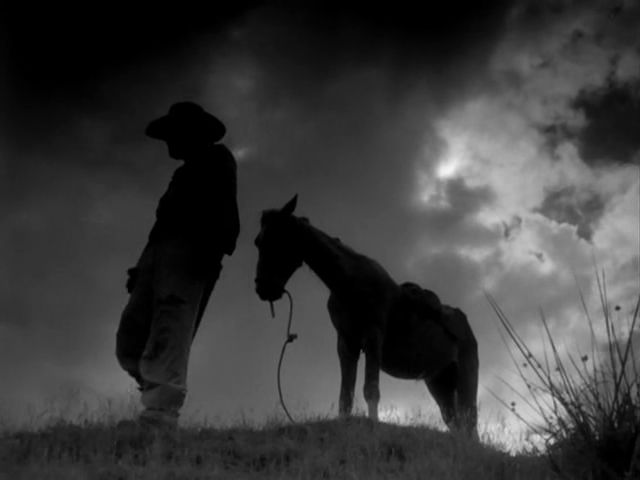
Art meets propaganda in I Am Cuba. Soviet director Mikhail Kalatzov, under commission by the Soviet government to make a film about the Cuban Revolution, crafted his own unique vision of Third World liberation. Russian and Cuban authorities were expecting a rousing call to revolution, and unfortunately disowned the film because they found it too arty and condescending. So it went unseen for decades.
Divided into four vignettes, Kalatzov’s camera floats through the Cuban landscape, lingering on certain moments like a travel documentary. Devotees of Terrence Malick will appreciate the style. The first part follows a group of American businessmen, acting like obnoxious extras from Mad Men, plotting to exploit the local population as they eye the native women with lust.
Then the narrative shifts to a peasant family being displaced from their land by the Bautista government at the behest of the American owned United Fruit Company. The third and most exciting section depicts a group college students involved in Castro’s revolutionary movement. The conclusion dramatizes the political awakening of a peasant family.
All four parts coalesce with the idea all oppressed classes joining together in solidarity.
Filmed not long after the CIA orchestrated Bay of Pigs invasion, I Am Cuba drips with Cold War ferment. Legend has it Fidel Castro and Che Guevera were technical advisors.
22. Invasion of the Body Snatchers (Don Siegel, 1956)
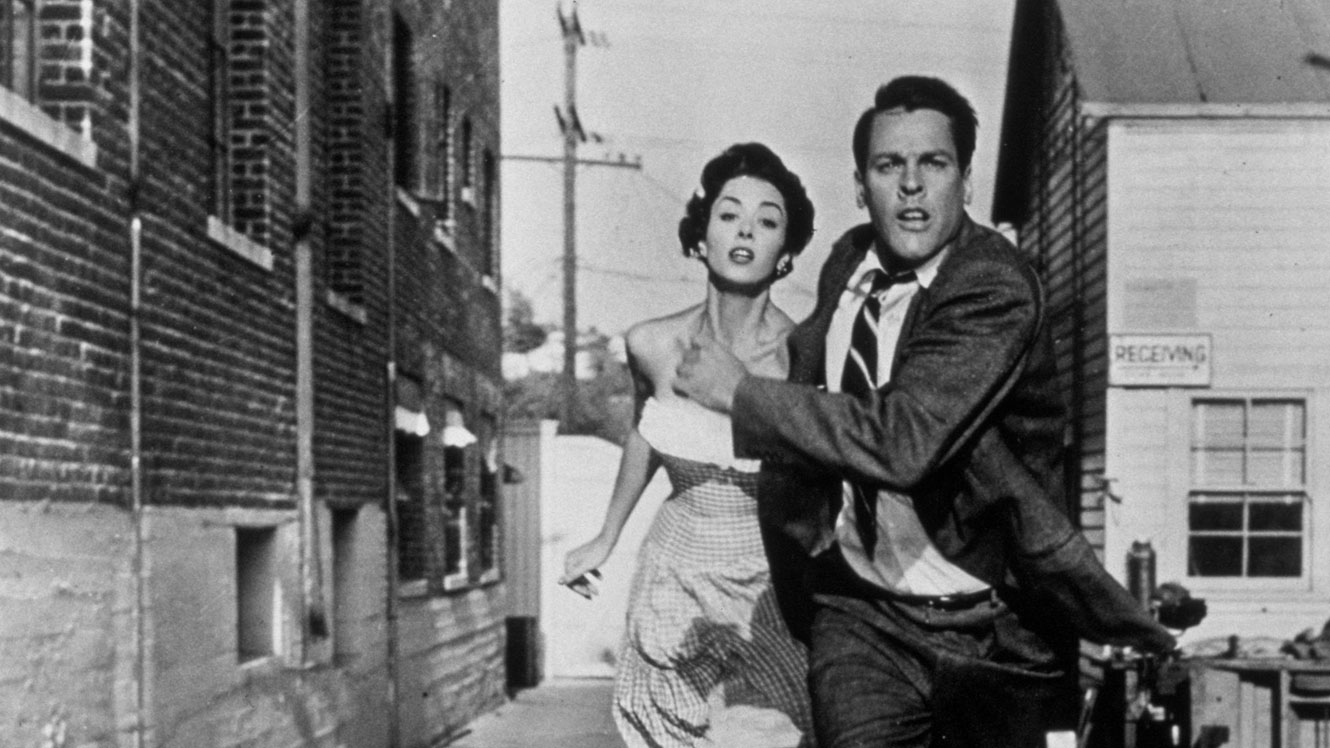
Don Siegel’s gem of a b-movie offered a unique twist on the alien invasion standby of 1950s Sci-Fi: aliens attack humans when they sleep and replace them with an emotionless duplicate body.
Set in the idyllic town of Santa Mira, one day people begin to notice their loved ones are not acting like themselves, so the kindly town Doctor (Kevin McCarthy) begins to investigate and discovers a shocking truth.
Siegel directed the film with pinpoint precision, moving it along at a swift 80 minutes. There’s offbeat humor and gooey special effects. McCarthy’s compelling as he transforms from rational doctor to raving maniac. Don’t miss a brief appearance by a young Sam Peckinpah.
Many read Invasion of the Body Snatchers as an allegory of McCarthyism and 1950s conformity. Others perceived an anti-communist message, the emotionless pod people being a parody of an ideal communal society. On any level, it’s a priceless portrait of suburban unease. Phillip Kaufman’s masterful remake in 1978 updated the story for the anxieties of the 1970s.
21. The Bedford Incident (James B. Harris, 1965)
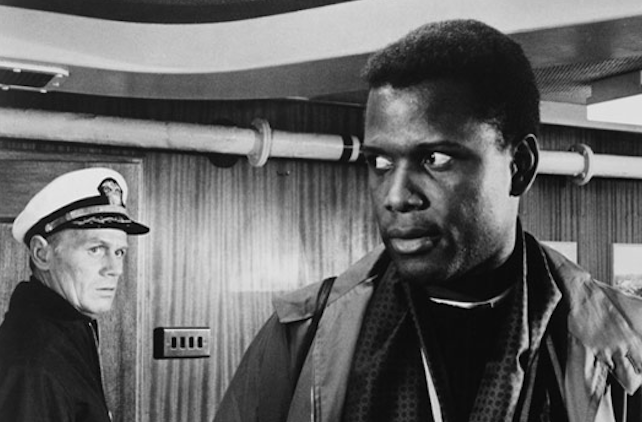
In the North Atlantic an American Patrol Boat under the command of Captain Finlander (Richard Widmark) engages in a chess match with a Russian submarine. A hardened Cold Warrior, Captain Finlander’s seems more concerned with personal glory than the consequences of his aggressive command style. Sidney Poitier co-stars as a photo-journalist doing a story on the Captain.
As Finlander pushes his crew to the brink they start to crack under his relentless pressure. Questions are raised about the nature of military leadership in a nuclear world, where a decision could mean the fate of the world.
The Bedford Incident also works as a study of masculinity under extreme stress at the hands of a tyrant. Poitier stands in for the audience by questioning the methods of Finlander.
The Bedford Incident indicts the mythos often attributed to military officers who put their own reputation and place in history above the welfare of their men. As usual, Widmark is tough as nails and humorless.
20. Matinee (Joe Dante, 1993)
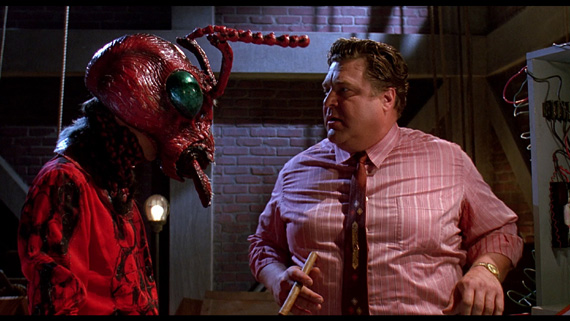
While several movies and documentaries have covered the Cuban Missile Crisis such as Thirteen Days and the TV docudrama The Missiles of October, those works feel ready made for a history class (and there’s nothing wrong with that). Joe Dante’s Matinee revisited the nail biting crisis through the eyes of teenagers in Key West.
John Goodman’s delightful as flamboyant b-movie director Lawrence Woolsey, a perfect composite of Alfred Hitchcock and William Caste, who arrives in town to promote his latest horror movie MANT! And a glorious meta film it is! There’s more than enough cheesy acting and special effects for a Mystery Science 3000 episode.
Matinee side steps the usual themes of fear and anxiety associated with the early 1960s by highlighting the pop culture. The birth of Marvel Comics, Rock and Roll, and cheesy monster movies would all shape the attitudes of the Boomer generation.
Cinephiles will appreciate the fun cameos and countless in jokes. Sentimental and nostalgic, Matinee’s a valuable sociological study of Cold War culture.
19. Good Night and Good Luck (George Clooney, 2005)
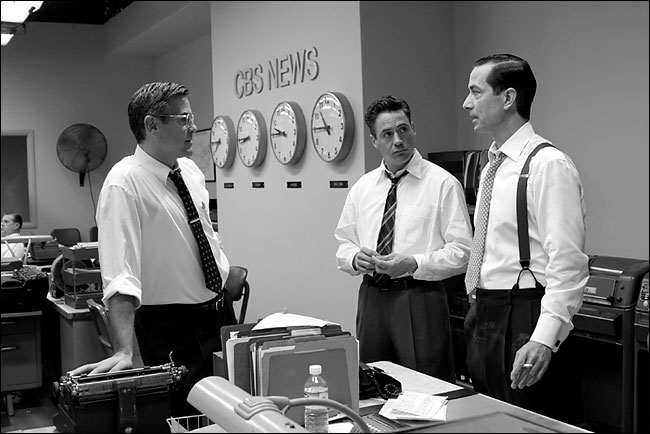
Good Night and Good Luck looks back at the early years of network television when legendary CBS newsman Edward R. Murrow (David Strathairn) decided to take on Senator Joseph McCarthy in the face of opposition from his corporate bosses.
McCarthy, a demagogue with a large following exploited American’s fears about communism at the expense of many lives and careers.
The B&W cinematography of Robert Elswit perfectly evokes the 1950s, the smell of cigarette smoke floats off the screen. The all-star cast included George Clooney, Patricia Clarkson, Robert Downey Jr., Frank Langella, and Jeff Daniels. McCarthy appears as himself in archival footage.
By the mid-1950s television played a crucial role in shaping perceptions of the world, just as the Internet has done in the 21st century. Murrow believed in adversarial journalism and that TV networks were obligated to keep viewers informed. As the film suggests, TV executives put a premium on what generated revenue.
Good Night and Good Luck is a reminder democracy and a vigilant media go hand in hand.
18. The Fog of War: Eleven Lessons from the Life of Robert S. McNamara (Errol Morris, 2003)
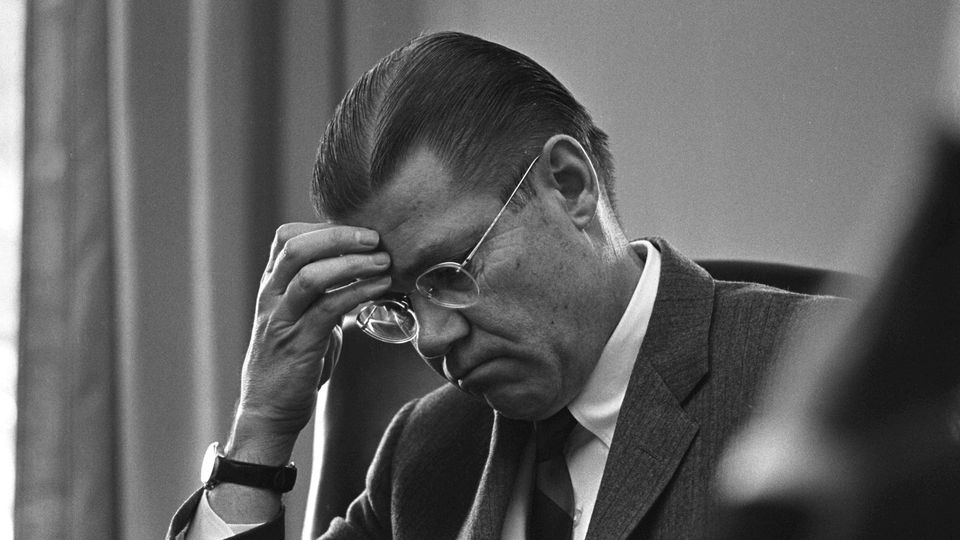
Robert S. McNamara may not be a household name these days, but for a generation he personified the military industrial establishment. One of the architects of the strategic bombing of Japan and North Vietnam, many consider McNamara a war criminal.
For the documentary McNamara sat down with documentary filmmaker Errol Morris to discuss his controversial career as Secretary of Defense for the Kennedy and Johnson administration.
Morris accompanied the interview with graphics and stock footage set to Phillip Glass’s dissonant music. Morris asked tough questions as McNamara struggles to defend his decisions.
As an executive at Ford Motor Company McNamara saved countless lives by having seat belts installed in automobiles. To be fair, there’s little on the humanitarian work he pursued after leaving public service. Morris does not avoid the fact strategic bombing killed thousands of innocent civilians.
An essential film for anyone wishing to learn about the Cold War from one of its key participants, The Fog of War raises more questions than it answers. There’s no resolution. Viewers may walk away angry, disturbed, or sympathetic. Maybe all three.